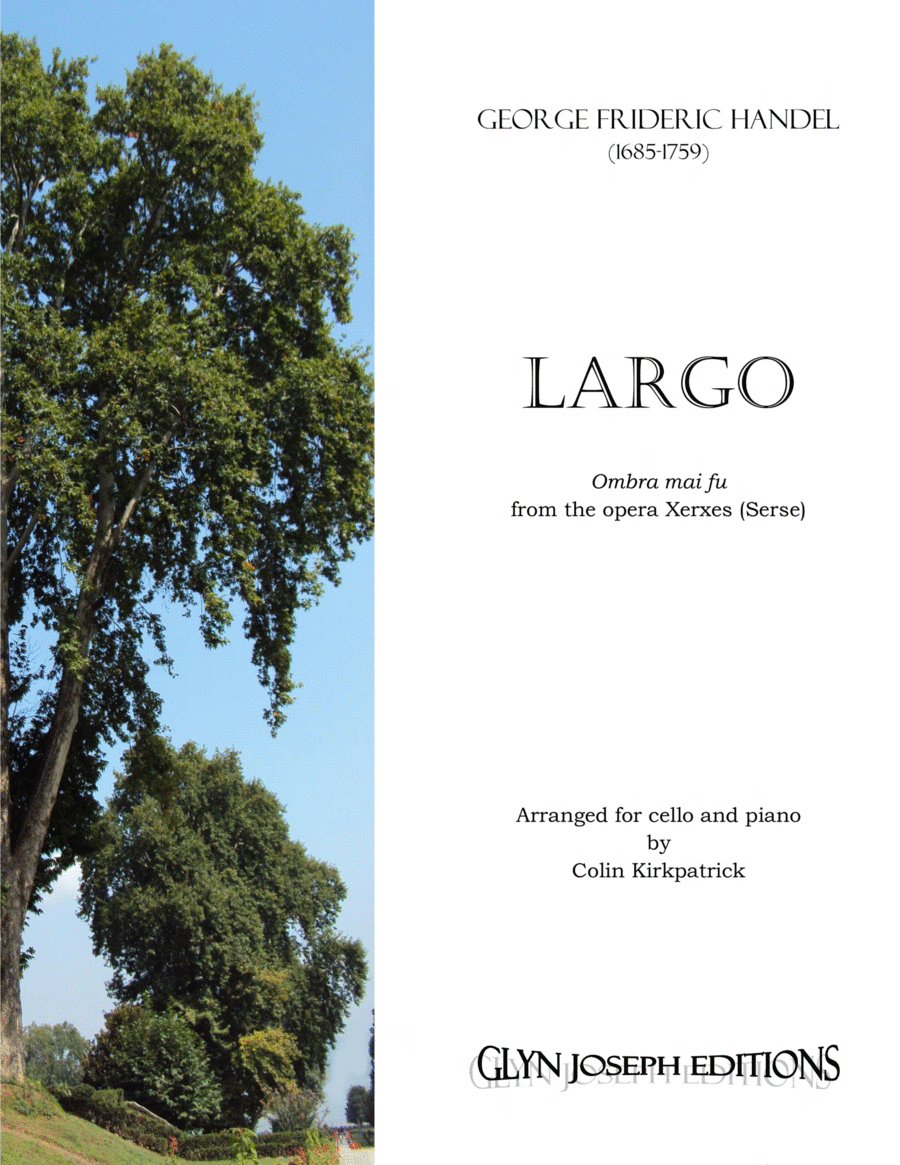Cello,Piano - Level 2 - Digital Download SKU: A0.522291 Composed by G F Handel. Arranged by Colin Kirkpatrick. Baroque,Easter,Holiday. Score and part. 6 pages. Colin Kirkpatrick Publications #6632869. Published by Colin Kirkpatrick Publications (A0.522291). This piece is probably Handelās best-known melody, although it began life as an operatic aria. The opera was called Xerxes, sometimes written Serses and pronounced something like āZERT-seesā. It was commissioned by The Kingās Theater in London and composed by Handel (who had become naturalized British and lived in London at the time) around 1737 and 1738. The opera is loosely based on the historical figure King Xerxes, who ruled from around 522-486 BC and was the fourth king of the Achaemenid Empire, a vast region that covered most of the present-day Middle East. The melody is often known simply as Handelās Largo (despite being marked āLarghettoā in the musical score) and is the opening aria in the opera. The aria, known by its opening line Ombra mai fu is sung by Xerxes to a plane tree: āTender and beautiful fronds of my beloved plane tree, let fate smile upon you...ā Although this lovely melody has survived over the years, the opera itself was a complete failure when it was first performed in London in 1738. This arrangement is in G major and the cello part is written in the bass clef throughout. The top note is the G above the bass clef (G4) and the piece generally requires the use of long and sustained bowing (indicted in the score), though the cello fingering has been omitted. The piano part has been kept as simple as possible. Being so well-known, this piece would make a popular encore number for a cello recital.
